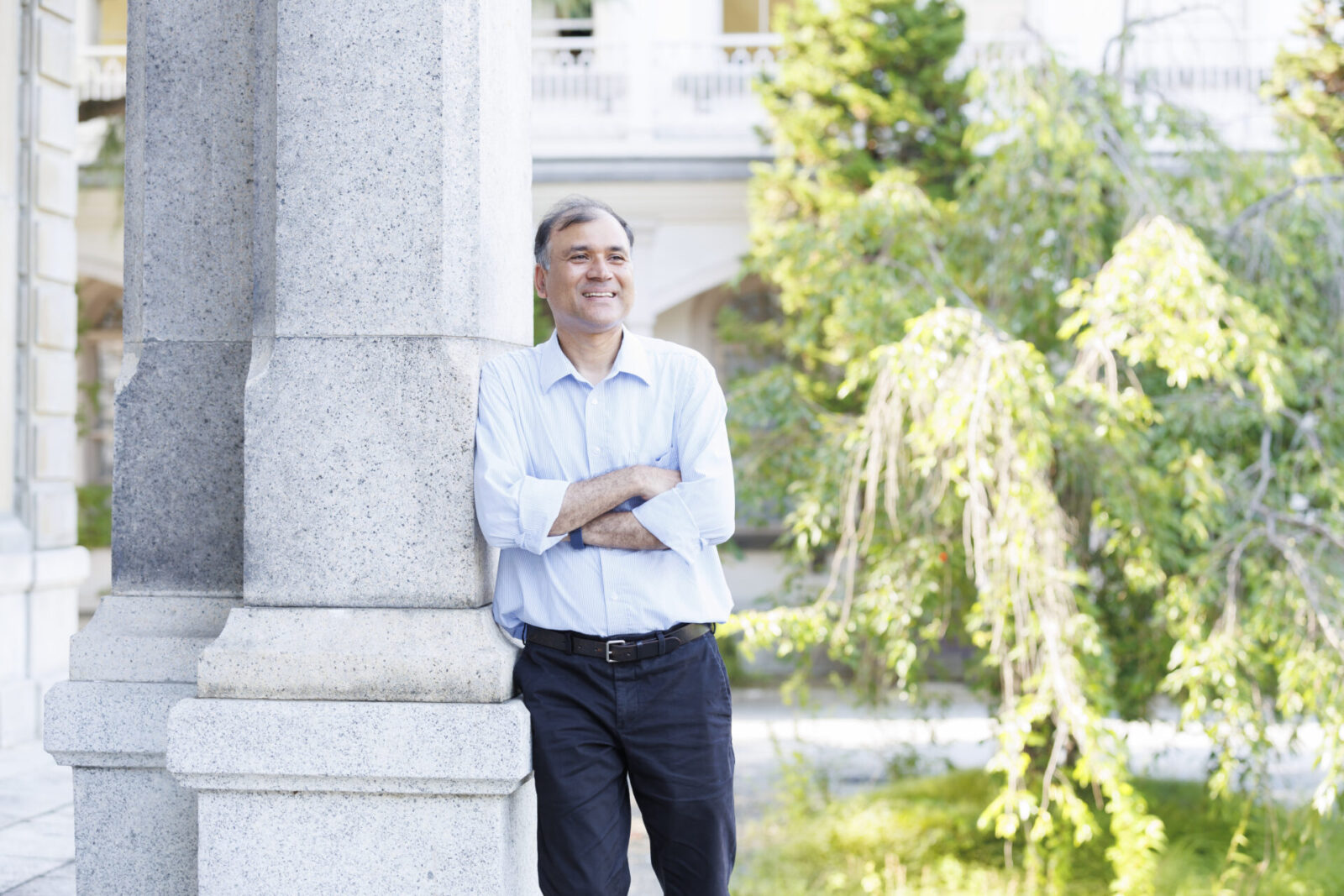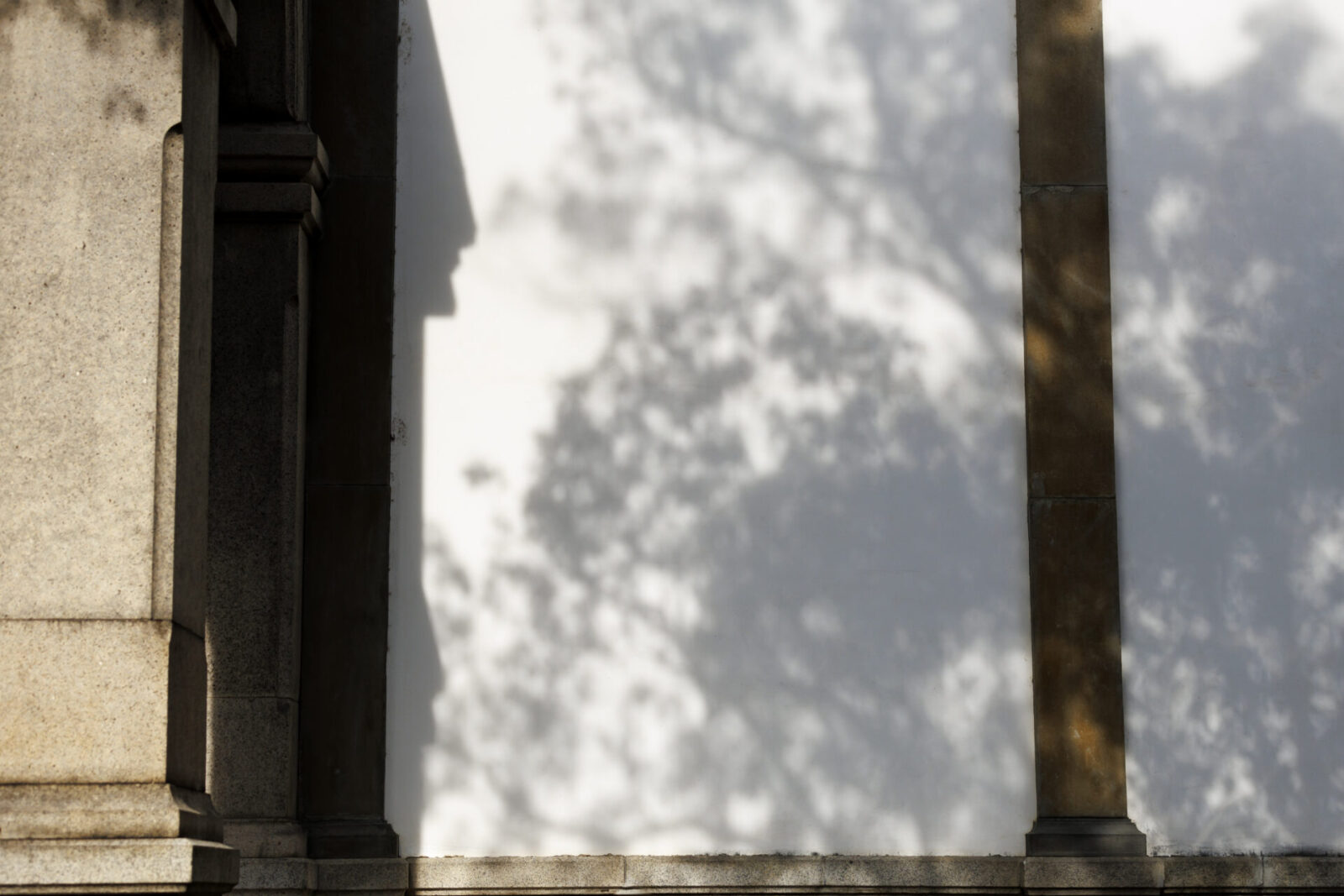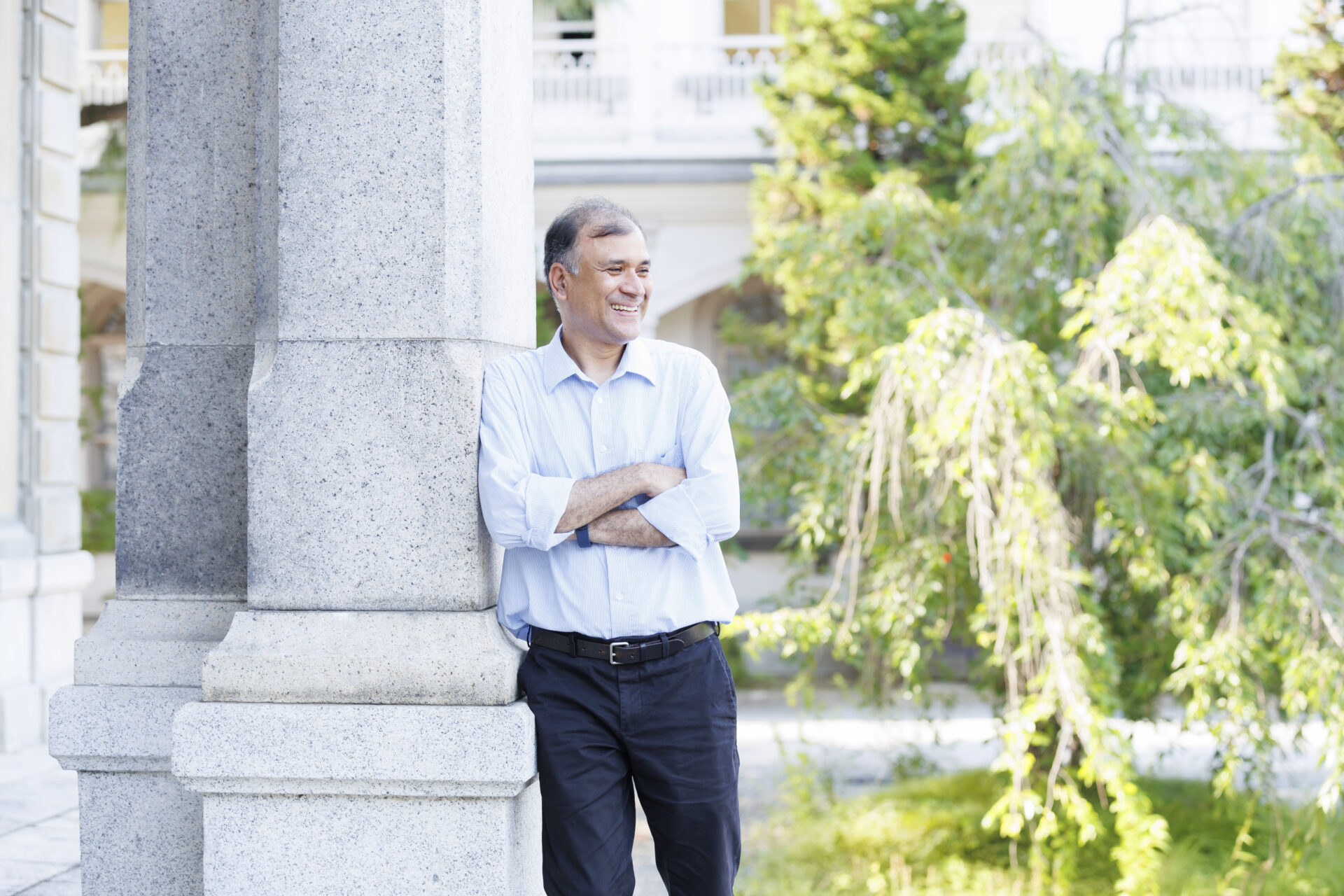“The flowing river never stops and yet the water never stays the same.”
Gouranga Charan Pradhan is a postdoctoral fellow researcher at the Research Center for World Buddhist Cultures of Ryukoku University and he was first inspired to pursue Japanese studies after reading Kamo no Chōmei’s Hōjōki.
Hōjōki was written 800 years ago during the Kamakura Period (1185-1333) and it is a literary work that garners attention whenever a natural disaster or calamity occurs. The above quote is a very well known expression of impermanence.
Gouranga says that Hōjōki not only tells us about the fragility of this world, but it also makes us ponder what defines an ideal life.
Hōjōki has been translated into about 50 languages and it has transcended time and place as it is read all around the world through multiple generations. For this article, we will speak with Gouranga about what makes Hōjōki such an universal piece of literature and what solace it can provide our minds in this modern world.
For our series, “To Live, To Relish,” we will explore what shikohin and its experiences mean to us in our modern world, and interview leading researchers, anthropologists, historians, and more.
Shikohin is something that we consume that may not have any nutritional value or benefit in sustaining our bodies.
Even though it is not a necessity to sustain life, shikohin is enjoyed in various ways around the world.
Perhaps shikohin is rather a necessary part of what makes us human.
Hōjōki as world literature and its universal appeal

── You have been researching Kamo no Chōmei’s Hōjōki (dated 1212, Kamakura Period) from the angle of world literature. Can you explain to us what defines world literature?
World literature are literary pieces that have been translated and read across various cultural settings and regions.
According to literary scholar David Damrosch, literary works become enriched in many ways through the process of being read around the world.
Literary works are transformed as they circulate through different languages and cultures.
When I say transformed, I do not mean that the content of the work is changed, but rather it is interpreted in different ways according to the ideas of the time, place and reader.
Repositioning Hōjōki as world literature and researching how it is interpreted around the world also means that we delve deeply into the multifaceted appeals of Hōjōki.
My emphasis is on interpretation.
The general understanding of world literature is that it is a piece of literature that has been read in multiple countries around the world. It tends to be judged based on the volume of its circulation and the number of countries and languages it has been translated and published in.
Rather than its circulation, I study pieces from a literary standpoint and I focus on how the interpretation of a piece spread around the world.

── What is your personal interpretation of Hōjōki?
Hōjōki was written during the Kamakura Period and it is known as being written by a “hermit” or someone who distances themselves from civil society, and for its depiction of natural disasters, the impermanence of the world and fragility of human life.
It is about 25 pages long with 400 characters per page, making it shorter than other longer pieces such as the Tale of Genji and easier to translate.
── Your point on it being easier to translate is interesting.
This piece has been translated into about 50 languages so far and there are about 15 different English translations alone.
I am researching how the interpretations of Hōjōki have changed around the world.
How did the Western world interpret Hōjōki during the Meiji Period? In particular, I study the first English translation of Hōjōki by Soseki Natsume and how this interpretation influenced the rest of the world. I summarized this research in my book, “Repositioning Hōjōki as World Literature” (published by Hozokan).
A key factor in Soseki’s interpretation of Hōjōki is that he interprets the piece as nature literature.
However, more than half of the content in Hōjōki is about disasters and calamities so I think it would be difficult to interpret this work as nature literature while maintaining the original structure of the piece. In Soseki’s translation, he intentionally omits much of the content describing such disasters.
However, Soseki’s translation had a significant influence on the English-speaking world’s interpretation of the piece.
In the English-speaking world, Kamo no Chōmei has been compared with English poet William Wordsworth and American writer Henry D. Thoreau, who was known to be a naturalist.

── In Japan, Hōjōki is most known for the phrase “The flowing river never stops and yet the water never stays the same.” which expresses impermanence. Is this kind of interpretation shared around the world?
Yes, the view of impermanence is the basic idea that everything is ever changing.
The word impermanence is the opposite of the word permanence.
In Japan it is known as a Buddhist ideology, but it is also similar to Hinduism in India, where I grew up. If you look into Buddhist ideology, it is also connected to Confucianism.
── The concept of impermanence has connections to Hinduism and Confucianism?
The idea of impermanence is universal and it transcends languages. From a material perspective, it is things like the falling cherry blossoms or death. Everything is impermanent.
To go further back in history, the ancient Greek philosopher Heraclitus famously said, “Everything flows.”
“The only constant in this world is change and everything in this world will never be the same again.” This is the very essence of impermanence.

Hōjōki as world literature revealed through changes in translations
── How has Kamo no Chōmei’s Hōjōki way of perceiving nature and impermanence influenced world literature?
There are differences from region to region as to how things are interpreted because of the differences in social and cultural backgrounds. Nonetheless, because there is universality in its content it has been translated and spread among many countries.
This is why Hōjōki is considered a work of world literature.
As I mentioned earlier, there have been 15 different translations for Hōjōki in just English alone.
You may think that having one translation should be enough to get the message across. However, the reason why a literary piece gets translated multiple times is because someone believes that the translations available are missing an important element, so they feel the need to retranslate it themselves.
It is the universality of the piece that makes people think this way. If it wasn’t for that, people would not feel the need to translate it under their own interpretation.
One of my research themes is to study the intent of such translators. Translations change and I think Hōjōki’s appeal is in its depth as a work of world literature.

There have been several translations after Soseki Natsume’s translation, including a joint translation by botanist and writer Minakata Kumagusu (1867-1941) and the British scholar of Japanese literature, Frederick Dickins (1838-1915).
Kumagusu’s translation looked at the piece as a work of Buddhist literature and seclusion. Dickins, on the other hand, emphasized the similarities between Kamo no Chōmei and American writer Thoreau (1817-1862), who lived a secluded and self-sufficient life.
Because of this Kamo no Chōmei became understood around the world under the image of Western naturalist ideologists.
On a different note, Haruki Murakami’s work is a well known example of world literature from Japan. Hōjōki was written in the 1200s and has been translated into English 15 times over the last 130 years.
Will Haruki Murakami’s works be translated so many times over the next 130 years? If you look at it from this perspective you can see what kind of universality world literature really holds.
Drawn to Hōjōki’s view of impermanence that is similar to Indian folklore
── You are from India, but what made you interested in Japanese literature and Hōjōki in the first place?
I am from the East Indian state of Odisha and studied history, Indian history and Japanese history at a local university in my hometown. The Japanese history I studied back then was from the Meiji Restoration to the postwar period.
Although I went on to pursue a master’s program, I ran out of money and could not continue so I started working. Of the eight years I worked, six years were for a Japanese company doing projects between Japan and India and some IT work, but I found the work very uninteresting.
I decided to return to academia and entered a master’s program at the University of Delhi. In one of my required courses called Introduction to Ancient Japanese Literature, I learned how to read ancient Japanese texts.
It was in this class when I came across Hōjōki for the first time.

── There are a number of famous ancient Japanese literature works, including The Pillow Book, Tsurezuregusa, The Tale of Genji and The Tale of Heike. What was it about Hōjōki that particularly attracted you?
There was a sense of familiarity in the stories of disasters and Buddhist views of impermanence in Hōjōki to the old Hindu stories my parents told me as a child.
Impermanence is the idea that things are constantly changing and it is a concept that comes up in both Hinduism and Buddhism teachings.
I was attracted to this aspect and chose Hōjōki as the theme of my master’s thesis.
The times in which I am living and the experiences that I have accumulated is part of what makes me who I am. We make decisions in our lives based on these experiences.
I think it is part of human nature to be drawn to and seek things that overlap with our own experiences. In my case it was not The Tale of Genji or Tsurezuregusa, but Hōjōki.
── So it resonated with your personal life experiences?
I think Hōjōki’s theme of questioning what defines impermanence from a philosophical perspective caught my interest. It made me think about the fragility and transience of this world.
In other words, it made me ponder the meaning of change.

We all know that everything is constantly changing and nothing is unchanging. We also know that we will eventually die.
Then why do we push ourselves and suffer in pursuit of a good life?
There is no right answer to this question and there never will be. Trying hard at something in itself is not a bad thing.
However, at the time the concept of impermanence stuck in my mind.
Now I have come to think that the message of Hōjōki can provide guidance and be an example in how we can model our lives today.
Examining Kamo no Chōmei’s shikohin experiences
── At DIG THE TEA, we are exploring shikohin and shikohin experiences that melt time. What do you think we can find if we look at Hōjōki from the perspective of shikohin?
It is said that the word shikohin was first coined by Mori Ogai.
Shikohin are things that stop time, melt time, or take us on experiences that are beyond ourselves. At the same time, it makes us momentarily forget ourselves. Such experiences may be what we refer to as the shikohin experience.

I did a little research to prepare for this interview, but it seems that there are no words that translate shikohin directly in other languages. Even as a concept, it does not fit with any other.
For example, the English word “healing” may be similar to shikohin experiences in some ways, but it is not enough to capture the whole concept. Shikohin is not necessarily something that is good for your body, so translating it as healing would seem contradictory.
I research translation theory and it is very difficult to convey the shikohin experience in English. So how should we understand the shikohin experience?
Human beings work in one form or another to make a living. In the midst of this, I think that the shikohin experience gives us a moment of temporary escape from reality and our own existence.

── Does shikohin experiences appear in Kamo no Chōmei’s lifestyle?
From what we can see in Hōjōki, Kamo no Chōmei sought to live a Buddhist life. He would play his biwa (Japanese flute) alone to the sounds of wind and water to comfort himself.
At times he seemed to enjoy physical exercise.
He would go on walks in the surrounding forests, climb mountains, visit temples and shrines and travel to places of famous poets and visit their graves.
Although it may seem surprising, Kamo no Chōmei was very physically active. It seems that his shikohin experience was to use his body to comfort and bring peace and comfort to his mind.
── Finding solace through physical activity may be one kind of shikohin experience. I get the impression that Kamo no Chōmei was a very relaxed individual.
In Hōjōki it is written that there were days where he felt too lazy to recite the Buddhist teachings. Kamo no Chōmei was in no way a saint and he was conscious of this.
Time is always flowing and there is no pause button in life. The cells in our body die and are born and replaced every day. Nothing is unchanging and constant in this world.
In such an impermanent world, how do we find the balance of living the “ideal” life and fulfilling our “desires”? This question is an important part of Hōjōki and I believe that is what makes it such an universal literary work.
We all live in the same society, but we all live different lives. How can we understand this ever changing world? How do we face our everyday lives and desires while healing our souls?
Hōjōki makes us ponder such questions and I think that is its universal appeal which has transcended time.

── What shikohin experiences do you enjoy personally?
I enjoy running. I like to empty my mind and just run. When you pick up pace, your body begins to focus on just running. I think emptying your mind and getting consumed with just moving your body is an excellent experience.
As researchers we have to publish papers or write a book every year. If we don’t, it makes it difficult to find a job.
Sometimes I like to read books and papers that are outside of my field of research. There are books and papers that I read for no concrete purpose or expectation. When I learn something unexpected, it makes me very happy and I find myself giggling to myself.
In my case, these are the moments that melt time. They are moments of relief that let me forget reality for a moment.
More specifically, they are moments in which I become one with my shikohin object.
── Using your body to bring solace to your mind. It seems to me that the life that Kamo no Chōmei lived 800 years ago fits well to the life that you are living today in modern Japan.
The fact that something so old feels new shows the universality of that literary work.
Even when times change and the people who read it change, there is always something new to discover in Hōjōki.
The concept of impermanence and the lifestyle that Kamo no Chōmei wrote about is still an unending subject of interest for me.
There are many other literary works in Japan that are being read as world literature but that do not get as much attention. I hope to continue to further study the universalities of these works.

Part 2 of 2:How do we face our unquenchable desires? Researcher of Hōjōki shares the value of “doing nothing”
Translation: Sophia Swanson
Reporter for Business Insider Japan. Born in Shinjuku-ku, Tokyo. Taught world history as a high school teacher, worked for Huffngton Post Japan and BuzzFeed Japan before assuming current position. Interests incude economics, history, and culture. Covers a wide range of topics from VTuber to Rakugo and is interested in food culture from around the world.
